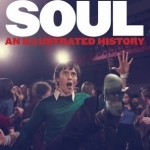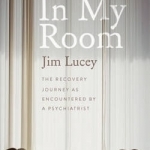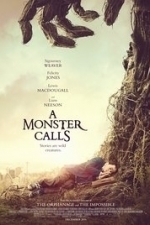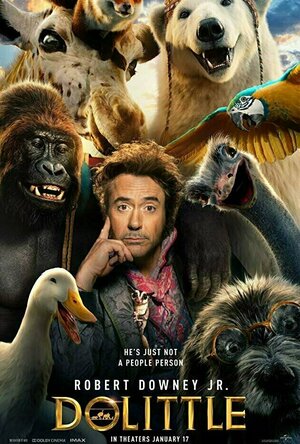
Northern Soul: An Illustrated History
Elaine Constantine and Gareth Sweeney
Book
The story of Northern Soul is one of practically total immersion, dedication and devotion, where the...

Ambulance Services: Leadership and Management Perspectives: 2015
Paresh Wankhade and Kevin Mackway-Jones
Book
This volume provides fresh insights and management understanding of the changing role of the...

pro soccer 2016 game - free football head games
Games
App
Are you a football maniac? Do you have football frenzy? If yes, Best Real Speed Pro football 2016...

Integrative Veterinary Care Magazine
Education and Magazines & Newspapers
App
30-day FREE trial with every new subscription purchased in the IVC Journal app. IVC Journal...

In My Room: The Human Journey as Encountered by a Psychiatrist
Book
'The room is a space for the mind, and a metaphor for the mind at the same time. Most of us will...
Bob Mann (459 KP) rated A Monster Calls (2016) in Movies
Sep 29, 2021
This is a crying shame because it is a riveting drama and a superb piece of film-making by the Spaniard J. A. Bayona (“The Impossible”) that may well catapult it already into my top 10 films of 2017. But it is not, I would suggest, a film that is remotely suitable for kids under 10 to see, dealing as it does with terminal illness, bullying and impending doom. For this is a dark (read pitch black) but hauntingly beautiful film.
Lewis MacDougall, in only his second film (after last year’s “Peter Pan”) plays Conor – a young but talented and sensitive artist growing up as a 12 year old in the North of England with his single mum (Felicity Jones). She is suffering from an aggressive form of cancer and is forever medically grasping for a new hope (D’ya see what I did there?). Young Conor believes fervently that each new treatment will be ‘the one’ but the building tension, the lack of sleep and his recurrent nightmares are destroying him mentally and physically. As if this wasn’t enough, his distracted nature is leading to him being seriously bullied at school and there is the added stress of having to live in his grandmother’s pristine and teen-unfriendly house when his mother is hospitalised.
Towering over the nearby graveyard on the hill is an ancient yew tree and Conor is visited after midnight by this “monster” (voiced by Liam Neeson). Is he dreaming, or is it real? The tree dispatches wisdom in the form of three ‘tales’, with the proviso that Conor tell the tree the fourth tale which “must be the truth”.
A tale of grief, guilt and a search for closure, this is a harrowing but rewarding journey for the viewer.
The film is technically outstanding on so many levels:
the art design is superb, with the gorgeous ‘tale animations’ being highly reminiscent of the beautiful ones in “Harry Potter and the Deathly Hallows, Part 1”;
the use of sound is brilliant, with sudden silence being used as a weapon with which to assault the senses in one key sequence;
the cinematography by Oscar Faura (“The Imitation Game”) is faultless, capturing both the dreary reality in a Northern winter with the comparative warmth of the strange dream-like sequences;
the music by Fernando Velázquez is used effectively and intelligently to reflect the sombre mood;
the special effects team led by Pau Costa (“The Revenant”, “The Impossible”) shines not just with Neesen’s monster, but with the incorporation of the root and branch effects into the ‘normal’ surroundings.
As the BFG illustrated, having a whole film carried by a young actor is a bit of an ask, but here Lewis MacDougall achieves just that like a seasoned pro. His performance is nothing short of staggering and – although a brave move by the Academy – it would be great to see him nominated for a BAFTA acting award for this.
Confirming her position in the acting top-flight is Felicity Jones, heart-wrenching in her role of the declining mum, and Sigourney Weaver is also excellent as the po-faced but grief-stricken grandmother. Liam Neeson probably didn’t add much by getting dressed up in the mo-cap suit for the tree scenes, but his voice is just perfect as the wise old sage.
The only criticism of what is an absorbing and intelligent script (by Patrick Ness, who also wrote the graphical novel) is the introduction of Conor’s Dad, played by Toby Kebbell (Dr Doom from “The Fantastic 4”), who is literally flown in from LA on a flying visit but whose role is a little superfluous to the plot.
This is exactly what “The BFG” should have been but wasn’t. It draws on a number of potential influences including “Mary Poppins”/”Saving Mr Banks” and “ET”. Wise, clever and a thing of beauty from beginning to end, this is a treat for movie-goers and a highly recommended watch. However, if you have lost someone to “the Big C” be aware that this film could be highly traumatic for you….. or highly cathartic: as I’m not a psychiatrist, I’m really not that sure! Also, if you are of the blubbing kind, take LOTS of tissues: the film features the best use of a digital clock since “Groundhog Day” and if you are not reduced to tears by that scene you are certifiably not human.
Bob Mann (459 KP) rated Dolittle (2020) in Movies
Feb 23, 2020
Doctor Doolittle (Robert Downey Jnr) - famed animal doctor, with the unique ability to communicate with any animal - is now holed up in his animal sanctuary, a recluse. His beloved wife - adventurer Lily - was lost at sea (in a cartoon sequence that could have just used the same clip from "Frozen"). He's lost the will to practice; and almost lost the will to live.
Impinging on his morose life come two humans: Tommy Stubbings (Harry Collett), a reluctant hunter with a wounded squirrel, and Lady Rose (Carmel Laniado), daughter of the Queen of England. (We'll quietly ignore the coincidence that, after what looks like several years of mourning, these two independently pitch up at Chez Doolittle within ten minutes of each other!).
For the Queen (the omnipresent Jessie Buckley) is dying, and noone (other than us viewers, let in on the deal) suspect foul play might be at work in the form of Lord Thomas Badgley (the ever-reliable Jim Broadbent) and the Queen's old leech-loving doctor Blair Müdfly (a moustache-twiddling Michael Sheen).
Doolittle must engage in a perilous journey to find the only cure that will save both the Queen and his animal sanctuary - the fruit of the tree on a missing island that his long lost love was searching for.
Let's start with the most obvious point first up. Robert Downey Jnr's Welsh accent is quite the most terrible, most preposterous, most unintelligible, most offensive (to the Welsh) attempt at an accent in a mainstream film in movie history. And that's really saying something when you have Laurence Olivier's Jewish father from "The Jazz Singer" and Russell Crowe's English cum Irish cum Scottish cum Yugoslavian "Robin Hood" in the list. Why? Just why? Was it to distance this version from Rex Harrison's? (Since most younger movie goers will be going "Rex who?" at this point, this seems unlikely). It's a wholly curious decision.
It turns RDj's presence in the movie from being an asset to a liability.
The movie has had a tortuous history. Filmed in 2018 at enormous expense, the film completely bombed at test screenings so they brought in more script writers to make it funnier and did extensive additional filming.
I actually disagree with the general view that the film is unfunny. For there are a few points in the movie where I laughed out loud. A fly's miraculous, if temporary, escape was one such moment. The duck laying an egg in fright, another.
However, these seem to stand out starkly in isolation as 'the funny bits they inserted'. Much of the rest of the movie's comedy falls painfully flat.
In terms of the acting, there are the obvious visual talents on show of Michael Sheen (doing a great English accent for a Welshman.... #irony), Jim Broadbent, Jessie Buckley, Joanna Page (blink and you'll miss her) and Antonio Banderas, as the swashbuckling pirate king cum father-in-law.
But the end titles are an amazing array of "Ah!" moments as the vocal performances are revealed: Emma Thompson as the parrot; Rami Malek as the gorilla; John Cena as the polar bear; Kumail Nanjiani at the ostrich; Octavia Spencer at the duck; Tom Holland as the dog; Selena Gomez as the giraffe; Marion Cotillade as the fox, Frances de la Tour as a flatulent dragon and Ralph Fiennes as an evil tiger with mummy issues. It's a gift for future contestants on "Pointless"!
There are a lot of poe-faced critics throwing brick-bats at this movie, and to a degree it's deserved. They lavished $175 million on it, and it looked like it was going to be a thumping loss. (However, against all the odds, at the time of writing it has grossed north of $184 million. And it only opened yesterday in China. So although not stellar in the world of blockbuster movies it's not going to be a studio-killer like "Heaven's Gate").
And I suspect there's a good reason for that latent salvation. I think kids are loving this movie, driving repeat viewings and unexpected word of mouth. It is certainly a family friendly experience. There are no truly terrifying scenes that will haunt young children. A dragon-induced death, not seen on screen, is - notwithstanding the intro Frozen-esque cartoon sequence - the only obvious one in the movie and is (as above) played for laughs. There are fantastical sets and landscapes. Performing whales. A happy-ending (albeit not the one I was cynically expecting). And an extended dragon-farting scene, and what kids are not going to love that!!
Directed by Stephen Gaghan ("Syriana", but better known as a writer than a director) it's a jumbled messy bear of a movie but is in no way an unpleasant watch. I would take a grandkid along to watch this again. It even has some nuggets of gold hidden within its matted coat.
As this is primarily one for the kids, I'm giving the movie two ratings: 4/10 for adults and 8/10 for kids... the Smashbomb rating is the mean of these.
(For the full graphical review, please check out the review on One Mann's Movies here - https://bob-the-movie-man.com/2020/02/22/doolittle-2019/ . Thanks).
The Bandersnatch (199 KP) rated Dracula in Books
Nov 7, 2019
Dracula was published in London in May 1897 by Archibald Constable & Company and was later copyrighted in the U.S in 1899 and published by Doubleday & McClure of New York. Despite having decent praise form reviewers it wasn't an immediate bestseller. Although the English newspaper the Daily Mail ranked Stoker's writing prowess in Dracula above that of Mary Shelly, Edgar Allen Poe and Emily Bronte's Wuthering heights. Unfortunately it didn't make Stoker that much money and he'd had to petition for a compassionate grant from the royal literary fund. When he died his widow was forced to sell his notes and outlines of the book at an auction in 1913. It was the unauthorised adaption of Nosferatu by F. W. Murnau in 1922 and the resulting legal battle made when Stokers widow took affront that the novels popularity began to grow.
Before writing Dracula Bram Stoker had been researching European folklore and stories of vampires having been most influenced by Emily Gerard's “Transylvania Superstitions” 1885 essay...which included content about the vampire myth. Some historians insist that Vlad iii Dracula (More commonly known as Vlad the impaler) was the model for Stokers count but there's been no supporting evidence to make that true. According to one expert Stoker only borrowed the barest minimum of information of the Wallachian tyrant and he's not even mentioned in Stokers notes. Stoker was a member of the London library during the 1890's where books by Sabine Baring-Gould, Thomas Browne, AF Crosse and Charles Boner are attributed to Stokers research. Stoker would later claim he'd had a nightmare caused by over-eating crab meat about a “Vampire king” rising from his grave. Whitby on the Yorkshire coast contributed its landscape since Bram Stoker often holidayed there during the summer.
Dracula wasn't Stokers first choice as title for the story since he cycled through The Dead Un-Dead then simply the Un-Dead the count wasn't even supposed to be Count Dracula having had the name Count Wampyr for several drafts before Stoker became intrigued by the name Dracula. After reading “An account of the principles of Wallachia and Moldavia with political observations relative to them” written by author William Wilkinson (Published in 1820). the descendants of Vlad ii of Wallachia took the name Dracula or Dracul after being invested in the Order of the Dragon in 1431. In the old Romanian language the word Dracul mean “the Dragon” and Dracula meant “Son of the Dragon”. Nowadays however Dracul means “the Devil”
Whilst Dracula is known as THE Vampire novel its not the first. Johan Wolfgang Von Goethe had his book the Bride of Corinth published in 1797, 1871's Carmilla (a story about a lesbian vampire) was written by Sheridan Le Frau and James Malcolm Rymer's penny dreadful series Venny the Vampire was a product from the mid Victorian period. Even John Polidori created an image of a vampyric aristocrat in his 1819 story The Vampyre when he spent a summer with Merry Shelly (creator of Frankenstein) and her poet husband Percy Bysshe Shelly and Lord Bryon in 1816.
I really love Dracula. It showed the madness, the ethereal quality and the ultimate danger of what a vampire could do. Like many other goth inclined teenagers trying to find their feet in the world Dracula definitely added its two cents to my self worth and love of all things macabre. The fact it was written by a Victorian writer has added a unusual depth to the story as only a Victorian writer could. The culture of the Vampire has become deep rooted and wide spread in its acceptance and Dracula has definitely spearheaded such a phenomenon.
Abraham “Bram” Stoker was Born in Dublin, Ireland on the 8th of November 1847, He was the third of seven children born to Abraham and Charlotte Stoker and was bedridden with an unknown illness until he recovered at seven. He started schooling at a private school run by the Reverend William Woods and grew up without serious illness. Stoker excelled at sports at Trinity College Dublin having graduated in 1870 with a BA (Bachelor of Arts). He was an Auditor of the College Historical Society and the president of the University Philosophical Society where his first paper was on Sensationalism in fiction and society.
Thanks to his friend Dr. Maunsell, Stoker became interested in the theatre as a student and whilst working for the Irish civil service he became a theatre critic for the Dublin evening mail where he attracted notice for the quality of his reviews. Stoker gave a favourable review of Henry Irving's adaption of Hamlet in December 1876, this prompted Irving to invite him to dinner where they ended up becoming friends. Stoker wrote The Crystal Cup which was published by the London society in 1872 and The chain of Destiny which was released in four parts in the Shamrock. Stoker also wrote the non-fiction book the duties of clerks of petty sessions in Ireland which was published in 1879.
Bram stoker married Florence Balcombe the daughter of a lieutenent-colonel in 1978 and they moved to London. Where Stoker ended up the Business manager of the Lyceum theatre as well as manager for Henry Irving- a position he held for 27 years. Despite being a very busy man Stoker ended up writing several novels (as well as Dracula) Including The Snakes pass in 1890, the lady of the shroud in 1909 and the lair of the white worm in 1911. when Henry Irving died in 1906 he published his personal reminiscences of Henry Irving. Stoker also managed productions at the Prince of Wales theatre.
Bram stoker died after a series of strokes in London on April 20th 1912, the cause of death is split between the possibility of Tertiary Syphilis or overwork. He was cremated and was placed in a display urn at Golders Green Crematorium in North London, he was later joined by the ashes of his Son Irving Noel Stoker in 1961, his wife Florence was meant to join them but her ashes were scattered at the Gardens of rest.
Stoker was honoured with a Google Doogle (the banner on goggles homepage) on November 8th 2012 commemorating the 165th anniversary of his birth. An annual festival in honour of Bram Stoker happens in Dublin, its supported by the Bram stoker estate and was/is usually funded by Dublin City Council and Failte Ireland.
My opinion of Bran stoker is that of a decent hard working man who loved life. Stoker epitomises the phrases of “a man on a mission” and “a man who hussles”. Having worked extremely hard both creatively as a novelist and business wise as a theatre manager Stoker pretty much showed that if you work hard you could pretty much do anything you set your mind to.
And there you have it a book for all the ages, definitely under the banner of AWESOME!!!.


